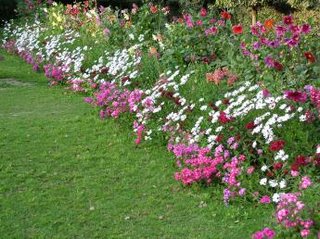Perennial Gardens That Stay Healthy All Year Round

Perennial gardens are well liked by many gardeners, there is a couple of main reasons for this. Not only will they bloom well for several seasons but they also come in a wide selection of shapes, colors and sizes. This is were perennial gardens differ to annuals.
Annuals have to planted every new season, where as perennials can remain in the ground to bloom for over a number of seasons. This makes the process of gardening with perennials a lot cheaper due to the fact that they do not need constantly replaced. The perennial garden is also much easier to maintain.
Another plus point for perennials is that they are very easy to work, this means that the demands on the gardener are significantly less. The key to having a perennial garden that will bloom all season long is sunshine, sufficient amount of water and good soil.
There a number of important factors to consider with perennials, this is due to the nature of their growth. Due to the fact that perennials remain in the ground season after season instead of starting fresh each year they are more likely to catch a disease or an insect infestation than the shorter lived annual plants. Due to this the gardener must always check his perennials to ensure there are no insect infestation or disease an any infection could very quickly spread through the whole perennial garden.
The best way to avoid disease and other problems in the perennial garden is to make sure the plants are as healthy and robust as they can be. Healthier plants are naturally able to withstand disease and insects better than weaker ones, and an infection that would kill a weaker plant will be fought off by one in better condition.
In addition, the gardener should be ready to immediately combat any diseases or infections that are found. Keeping a supply of common fungicides and insecticides on hand is a good insurance policy when trouble strikes. Perennials should regularly be inspected for signs of problems, such as wilting leaves, spots or holes in the leaves. These can all be warning signs of problems with disease or insects.
It is a good idea to get in the habit of checking for such problems every time the garden is weeded, watered or otherwise tended to. When watering perennials, it is generally best to water them deeply once a week instead of spraying them with a hose more often. It is important not to encourage standing water on the leaves, as this can leave the plants vulnerable to fungal infections and other problems. It is also important not to water the plants during the heat of the day, since watering then could cause tender foliage and flowers to suffer burns.
Choosing to water deeply and not as frequent is always better than choosing to water more often and shallowly. Making the investment in a soaker hose or drip irrigation system is always advisable for the perennial gardener.
As the key advantage of gardening with perennials is he ability that they have to come back year after year, it is vital that you care for the plants with great care when the growing season comes to an end. It is advisable to prune your perennials once a year but it is also necessary that you pay attentions to the requirements of each variety. Some perennials will require a much larger amount of pruning during the winter. By understand the requirements of each of your plants you will ensure that you perennial garden stays healthy all year round.
Article Source: http://www.article-exposure.com
Discover more flower gardening tips that will have your garden blossoming all year round. Visit flower gardening tips. For more articles on flower gardening visit flower gardening articles
0 Comments:
Post a Comment
<< Home